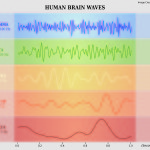In the debates between “progressive” and “traditional” educational theories, few arguments rage hotter than the battle between project based learning and direct instruction.
PBL’s proponents take a constructivist perspective. They argue that people learn by building their own meaning from discrete units of information.
In this view, teachers can’t simply download conclusions into students’ brains. We can’t, that is, just tell students the right answer.
Instead, we should let them wrestle with complexities and come to their own enduring understanding of the material they’re learning.
An Alternative Perspective: The Benefits of Direct Instruction
In a recent meta-analysis, Jean Stockard’s team argues that direct instruction clearly works.
Looking at 300+ studies from over 50 years, they conclude that DI benefits students in every grade, in a variety of racial and ethnic groups, with a variety of learning differences, from every socio-economic background.
Of course, this research conclusion challenges some often-repeated assurances that direct instruction simply can’t help students learn.
(The recent meta-analysis is, unfortunately, behind a paywall. You can, however, see some impressive graphs in an earlier white paper by Stockard.)
Another Alternative Perspective: Reinterpreting “Constructivism”
Interestingly, Stockard doesn’t disagree with a constructivist understanding of learning. Instead, she sees direct instruction as a kind of constructivism.
“DI shares with constuctivism the important basic understanding that students interpret and make sense of information with which they are presented. The difference lies in the nature of the information given to students, with DI theorists stressing the importance of very carefully choosing and structuring examples so they are as clear and unambiguous as possible.”
(This quotation comes from a brief pre-publication excerpt of the meta-analysis, which you can find here.)
In other words: in Stockard’s view, the difference between PBL and DI isn’t that one is constructivist and the other isn’t.
Instead, these theories disagree about the kind of information that allows students to learn most effectively.
Simply put: PBL theorists think that relatively more, relatively unstructured information helps students in their mental building projects. DI theorists think that relatively less, relatively tightly structured information benefits students.
Stockard makes her own views quite plain:
“It is clear that students make sense of and interpret the information that they are given–but that their learning is enhanced only when the information presented is explicit, logically organized, and clearly sequenced. To do anything less shirks the responsibility of effective instruction.”
You might mentally add a “mic drop” at the end of that passage.
Other Sources
Of course, lots of people write on this topic.
John Hattie’s meta-meta-analyses have shown DI to be quite effective. This Hattie website, for example, shows an effect size of 0.60. (For Problem based learning, it’s 0.12; for Inquiry based teaching, it’s 0.35.)
If you like a feisty blogger on this topic, Greg Ashman consistently champions direct instruction.
And, I’ve written about the difficulties of measuring PBL’s success here.




The basic problem is that quality of instruction comes first and in the best of all worlds we would be comparing high quality PBL teaching to high quality DI instruction. I would usually stand on the PBL side of things but I would take a highly competent DI over a mediocre PBL.
Another problem i see with this kind of article is that it’s implying that by adopting a particular style of teaching the quality of teaching could be improved, without teaching faculty how to adjust content and their teaching to the new method.
There is a good deal of “data” collected here regarding the results of direct instruction, and it has been used to support the topic of this article. In my 45 years of experience in the K-12 classrooms and at the university level, I have learned that direct instruction can have an effective place in our educational environments.
However, there are two critical components of learning qualities missing in this perspective.
1) The assessment results utilized here primarily reflect the lower level of cognitive functions: an emphasis of recall, some comprehension, and little to no application or analysis of content. Although important, these assessments do not measure if a student knows how to use the material, nor if they are prepared to build upon this knowledge in a constructive manner. The higher order thinking skills have been omitted from this report, along with retention of content as well.
2) The “restricted scope of assessments” included only adult evaluations where immediate numeric values are recognized. Long term thinking and real problem solving are typically an oversight on these surveys. The key perspectives for comparing these two methods actually come from the student’s level of engagement and evaluation. All of which should be included. Ask: Did the student find their “direct instruction sessions” as rewarding as the project-based lesson? Were students able to compare both examples of instructional methods? Even very young students know when they are fully engaged and are learning for depth and long-term advancement. You need only ask them, they will give you an explicit reflection once they have experienced both methods.
In my many years of varied instructional experiences, I have never had a student tell me that they “really learned a lot” after experiencing a direct instructional session, nor that they found a strong sense of value in the experience. In contrast, at the end of a well-constructed project-based activity, I have heard students express how much they enjoyed directing their own intense learning event and liked reporting evidence that even the teacher didn’t know. Students also demonstrated improved self-regulation and evaluation skills, after the project-based events. After observing both types of instructional methods over my 45 years, I found there to be a night and day difference and I have learned to value the student’s authentic performance evidence more than the results of multiple choice tests.
Occasionally, I have discovered that students who experience ADHD or have extreme Type A Learner tendencies do prefer the direct instructional sessions more; because they are typically clear, simple in content and the obligation to learn is “over with” within a short time period.
After teachers learn how to “facilitate learning” in the classroom and are able to construct a well-balanced project, they too choose not to return to the direct instructional environment. Once teachers experience students who promote their own, in-depth learning they know they are on the right track for a rewarding career. Projects may demand an increased degree of prior planning and preparation, but the actual instructional relationship with the student is invigorating and the results gratifying.
As we know, the quality of data that we use is going to reflect our results. So please Mr. Watson, add the higher order thinking skills and student evaluations to this data and I will be most willing to learn from it.